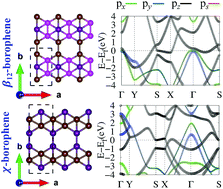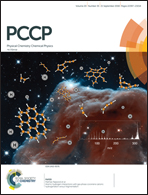Strain controlled electronic and transport anisotropies in two-dimensional borophene sheets
Abstract
Two recent reports on realization of an elemental 2D analogue of graphene:borophene (Science, 2015, 350, 1513–1516; Nat. Chem., 2016, 8, 563–568) focus on the inherent anisotropy and directional dependence of the electronic properties of borophene polymorphs. Achieving stable 2D borophene structures may lead to some degree of strain in the system because of the substrate–lattice mismatch. We use first principles density functional theory (DFT) calculations to study the structural, electronic and transport properties of β12 and χ-borophene polymorphs. We verified the directional dependency and found the tunable anisotropic behavior of the transport properties in these two polymorphs. We find that strain as low as 6% brings remarkable changes in the properties of these two structures. We further investigate current–voltage (I–V) characteristics in the low bias regime after applying a strain to see how the anisotropy of the current is affected. Such observations like the sizeable tuning of transport and I–V characteristics at the expense of minimal strain suggest the suitability of 2D borophene for futuristic device applications.



 Please wait while we load your content...
Please wait while we load your content...